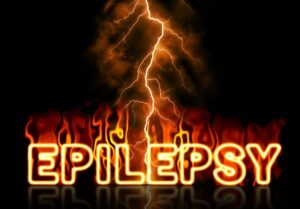Pain management is a complex process that often requires a comprehensive approach. While medication can provide relief for many individuals, it is important to explore the connection between the mind and body to effectively manage pain. One such approach is cognitive-behavioral therapy (CBT), a psychological intervention that focuses on changing negative thought patterns and behaviors associated with pain.
CBT aims to help individuals understand the link between their thoughts, emotions, and pain sensations. By identifying and challenging negative thoughts, patients can develop healthier coping strategies, resulting in reduced pain levels and improved overall well-being. The therapy also includes education on pain science, providing patients with a deeper understanding of the complex nature of pain.
Research has shown that CBT can be particularly effective in managing chronic pain conditions, such as fibromyalgia and chronic back pain. It empowers individuals to take an active role in their pain management, providing them with a sense of control and autonomy. In combination with other pain management techniques, CBT can significantly improve the quality of life for many individuals.
Alternative therapies for pain management
While conventional medical treatments play a crucial role in pain management, alternative therapies can offer additional benefits for individuals seeking comprehensive pain relief. These therapies, often rooted in ancient practices and holistic approaches, focus on treating the whole person rather than just the symptoms.
Acupuncture, for example, is a traditional Chinese technique that involves the insertion of thin needles into specific points on the body. According to Traditional Chinese Medicine, pain results from an imbalance in the body’s energy flow, known as Qi. Acupuncture aims to restore this balance, promoting the natural healing process and alleviating pain.
Another alternative therapy is mindfulness meditation, which involves bringing one’s attention to the present moment without judgment. By cultivating a non-reactive awareness of physical sensations and thoughts, individuals can develop a different relationship with pain. Research suggests that mindfulness meditation can reduce pain severity, improve pain acceptance, and enhance overall well-being.
Other alternative therapies include yoga, massage therapy, chiropractic care, and herbal remedies. While the scientific evidence supporting these therapies may vary, many individuals have reported significant pain relief and improved quality of life through their use.
Integrative pain management techniques
Integrative pain management combines conventional medical treatments with alternative therapies, recognizing the need for a multidimensional approach to pain relief. By addressing the interplay between the mind and body, integrative techniques aim to provide a comprehensive and personalized approach for each individual.
One example of integrative pain management is the use of medications in combination with CBT or mindfulness meditation. While medications can provide temporary relief, these psychological interventions can address the underlying factors contributing to pain, reducing the need for higher doses or long-term reliance on medication.
Physical therapy, a common treatment modality for musculoskeletal pain, can also be integrated with alternative therapies. For instance, a physical therapist may combine manual therapy techniques with acupuncture or yoga to optimize pain relief and functional recovery.
Furthermore, integrative pain management may include lifestyle modifications such as dietary changes, stress management techniques, and regular exercise. These lifestyle factors can have a significant impact on pain perception and overall well-being.
It is important to note that integrative pain management should be tailored to the individual’s specific needs and preferences. What works for one person may not work for another. Therefore, a collaborative approach between healthcare providers and patients is crucial to developing an effective and personalized pain management plan.
In conclusion, the connection between the mind and body plays a vital role in pain management. Cognitive-behavioral therapy, alternative therapies, and integrative techniques offer valuable tools for individuals seeking comprehensive relief from pain. By understanding and addressing the underlying factors that contribute to pain, individuals can take an active role in their own healing process, leading to improved quality of life and overall well-being.




